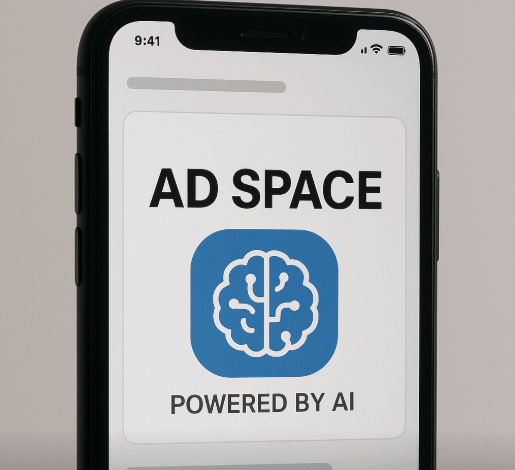
Over the past few years, I’ve seen the language around AI in advertising shift from possibility to implementation. Many of us in product and platform roles are no longer exploring what AI could do. We’re already relying on it.
In my work, I’ve seen how advertisers are using AI to define audiences, optimize campaigns, generate creative, and evaluate performance at scale. That process has surfaced a few clear patterns: what’s working, what needs oversight, and what advertisers should be thinking about next.
Audiences are now built in motion
We used to think of audience segmentation as a one-time task. Set the demographics. Choose the geo. Maybe add some interest filters. But that’s not how people actually behave. They aren’t static, and neither are their intentions.
Today, advertisers generate intent signals based on how someone interacts with content. Not just what they click, but how they scroll. Whether they slow down. Whether they reverse direction. Whether they linger, then return later. These gestures offer clues we never had before and help identify whether someone is researching, comparing, or just skimming.
Large language models allow advertisers to layer in a deeper understanding of the content itself – its tone, complexity, and the sentiment it evokes. This makes it possible to interpret intent at the session level, not broadly, but in that moment.
These signals update continuously. The audience you target on Day One may behave differently by Day Ten. That flexibility changes how advertisers think about reach, relevance, and performance.
Lookalikes without identity
One of the more surprising benefits of AI is its ability to improve lookalike targeting without relying on identity data. Traditional models needed thousands of conversions and extensive profiling. Now, advertisers can generate high-quality lookalike cohorts using just a few hundred interactions, because context matters more than labels.
This also changes how advertisers respond to the loss of third-party cookies. Instead of preserving identifiers, many teams now focus on behavioral patterns and semantic context. What people read, how they engage, and how their intent evolves within a session—these have become the new building blocks for targeting.
This shift also encourages advertisers to avoid narrowing their audience too early. At launch, the best strategy often involves allowing the system to explore, gather intent, and expand. From there, high-performing teams build tight feedback loops between content, user action, and ad delivery.
Creative should be faster, not just smarter
No matter how good your targeting is, performance breaks down when creative stagnates. We’ve all seen it happen. Strong early results that taper off as fatigue sets in.
Many performance teams now focus on reducing the operational burden of refreshing creative. With generative AI, it’s possible to test systems that produce new variants quickly. Given a landing page and brand guidelines, advertisers can generate headlines, image options, and ad copy combinations that meet platform policy and performance standards.
The priority isn’t just scale. It’s also about eliminating guesswork. AI can show what’s likely to perform, flag language that may lead to rejection, and help rotate creative before fatigue becomes a problem.
Don’t get me wrong. There’s still value in handcrafted storytelling. But for paid performance, speed often wins. The ability to generate, test, and swap quickly (while staying on-brand) unlocks real gains.
Optimization is happening faster than most teams can respond
Manual optimization still has its place. But in AI-enhanced systems, budget and bid decisions now happen in real time. Reinforcement learning allows advertisers to make adjustments on the fly – pacing spend, prioritizing high-quality inventory, and shifting strategies as intent signals evolve.
These systems can respond to nuance that human teams often miss. If someone shifts from passive reading to active research mid-session, the system can switch creative. If high-quality inventory becomes available at a lower cost, it reallocates budget in real time.
What this means for teams is a shift in focus. Less time spent adjusting sliders. More time spent thinking about guardrails, inputs, and long-term strategy.
Efficiency is the quiet story here
Not all of AI’s impact shows up in CTR or ROAS. Some of the biggest gains are happening behind the scenes. Campaign setup is simpler. Creative moderation is faster. Insights are easier to extract. Instead of combing through reporting dashboards, advertisers can now use AI tools to ask questions and get direct answers: Why did this campaign slow down last week? Where should I shift spend next?
Some teams now use AI-generated summaries to give clients clear explanations instead of raw data. This is where AI becomes a partner, not just a calculator.
Guardrails come first
With this increase in speed and automation come real risks. Campaigns can misfire, budgets can drift off course, and bias can influence decisions without anyone noticing. Fairness and transparency are not optional. They must be built into the foundation of how advertisers use AI.
The strongest teams put these principles into practice. They check for bias before launch, monitor for changes over time, and audit outcomes regularly. They also make it easy for users to understand why they are seeing a particular ad. And internally, these teams insist on visibility into how budgets shift, how audience segments perform, and how automated systems make decisions.
When these safeguards are missing, AI systems can make opaque decisions that misallocate budget, misclassify audiences, and serve creatives that undermine user experience. These failures often go unnoticed until performance tanks or brand safety issues arise. But by then, the damage is done.
If AI is going to improve performance, it has to begin with trust. And trust depends on visibility.
Addressing these risks starts with intentional setup, strong inputs, and tight feedback loops – the very areas performance teams should focus on now.
What to focus on now
If you’re responsible for digital performance, here’s what I’d recommend:
Start experimenting with AI-powered targeting and creative tools. Feed the systems strong signals – conversion events, page context, creative outcomes. Use those inputs to guide the learning process.
At the same time, define your guardrails. Set expectations around brand safety, creative tone, and acceptable audience expansion. Treat AI as a system that amplifies what you give it.
The real value is not in one feature or product. It’s in the compounding effect of many small improvements. Real-time intent. Smarter creative. Faster feedback. Tighter loops between signal and action.
That’s where performance lives now. And we’re only just getting started.





